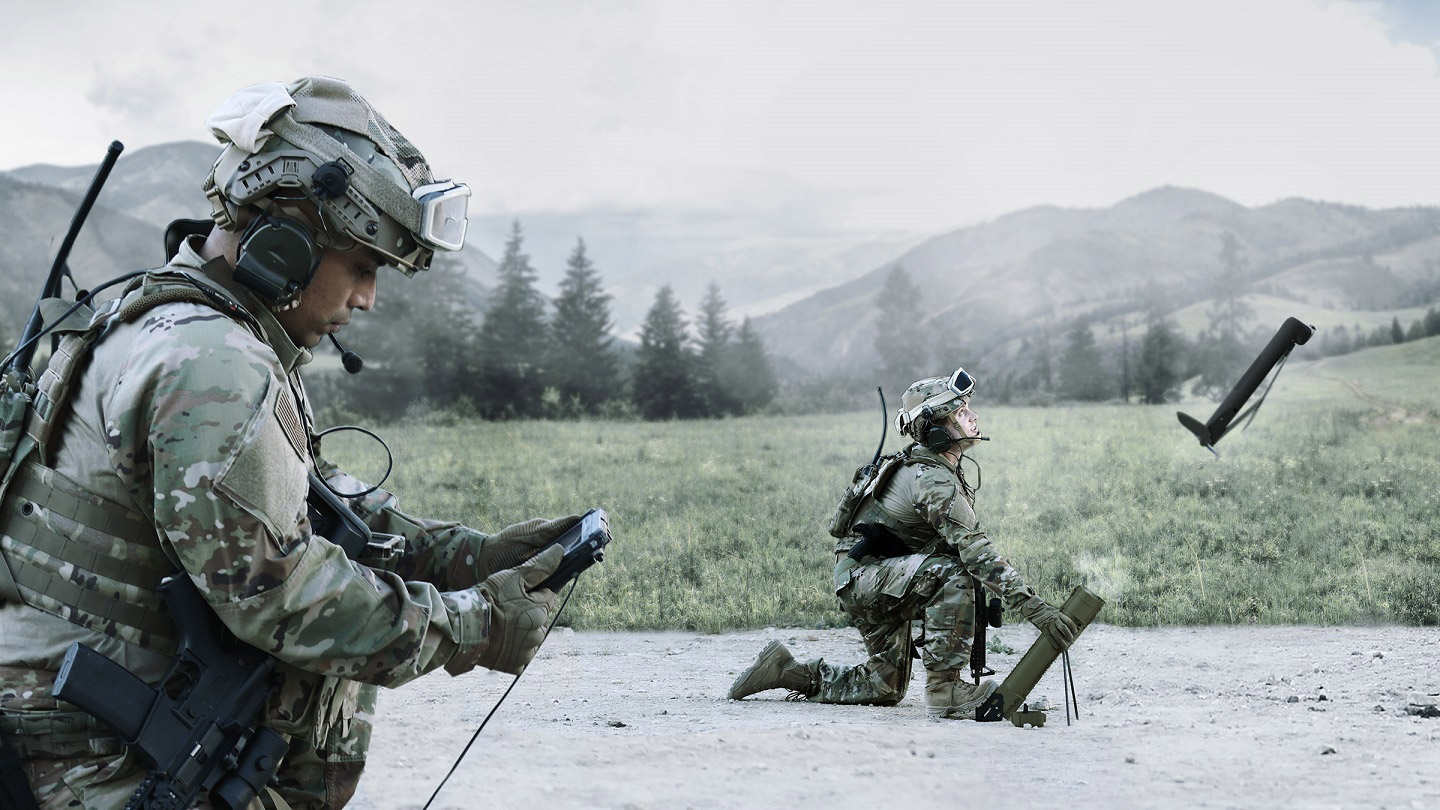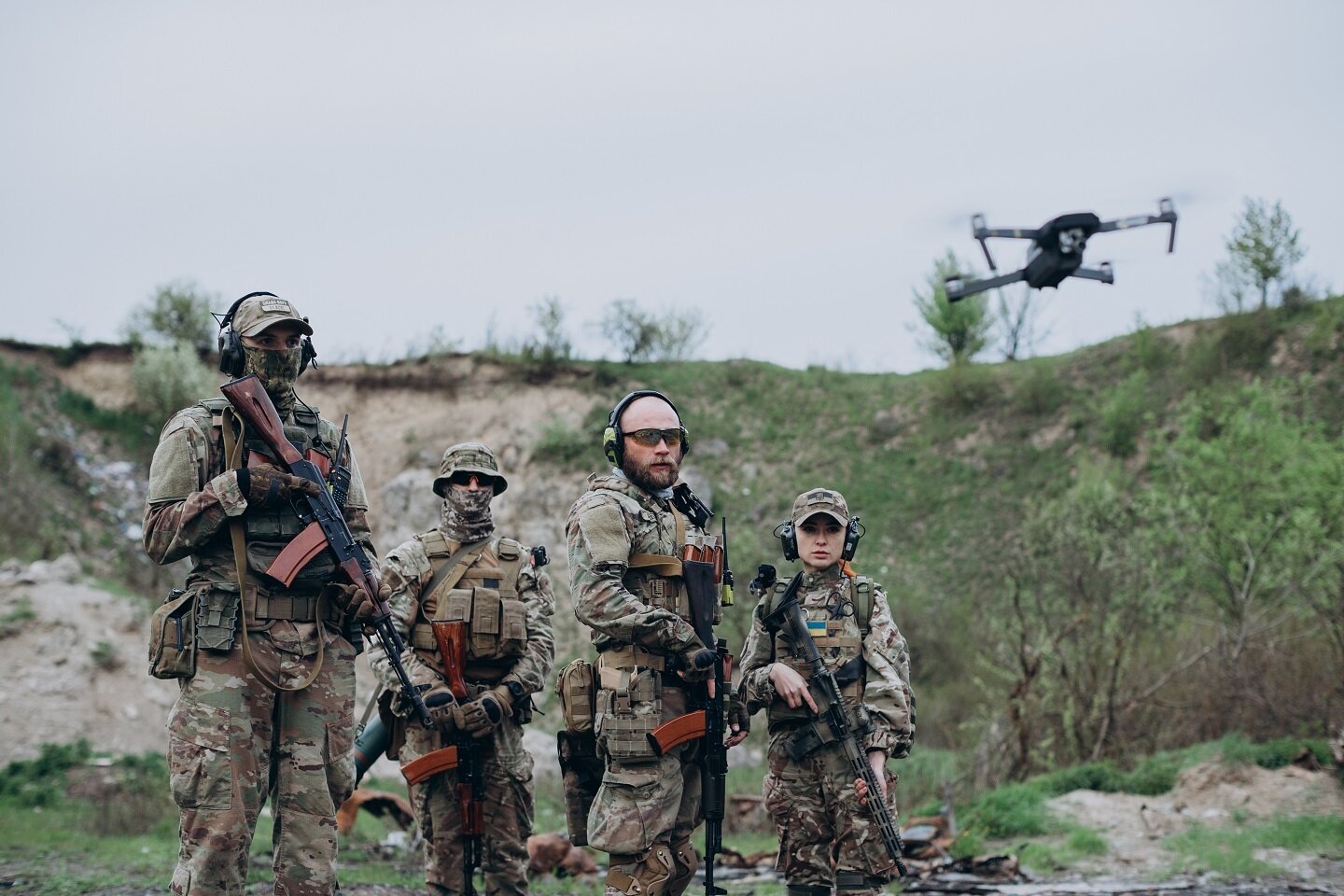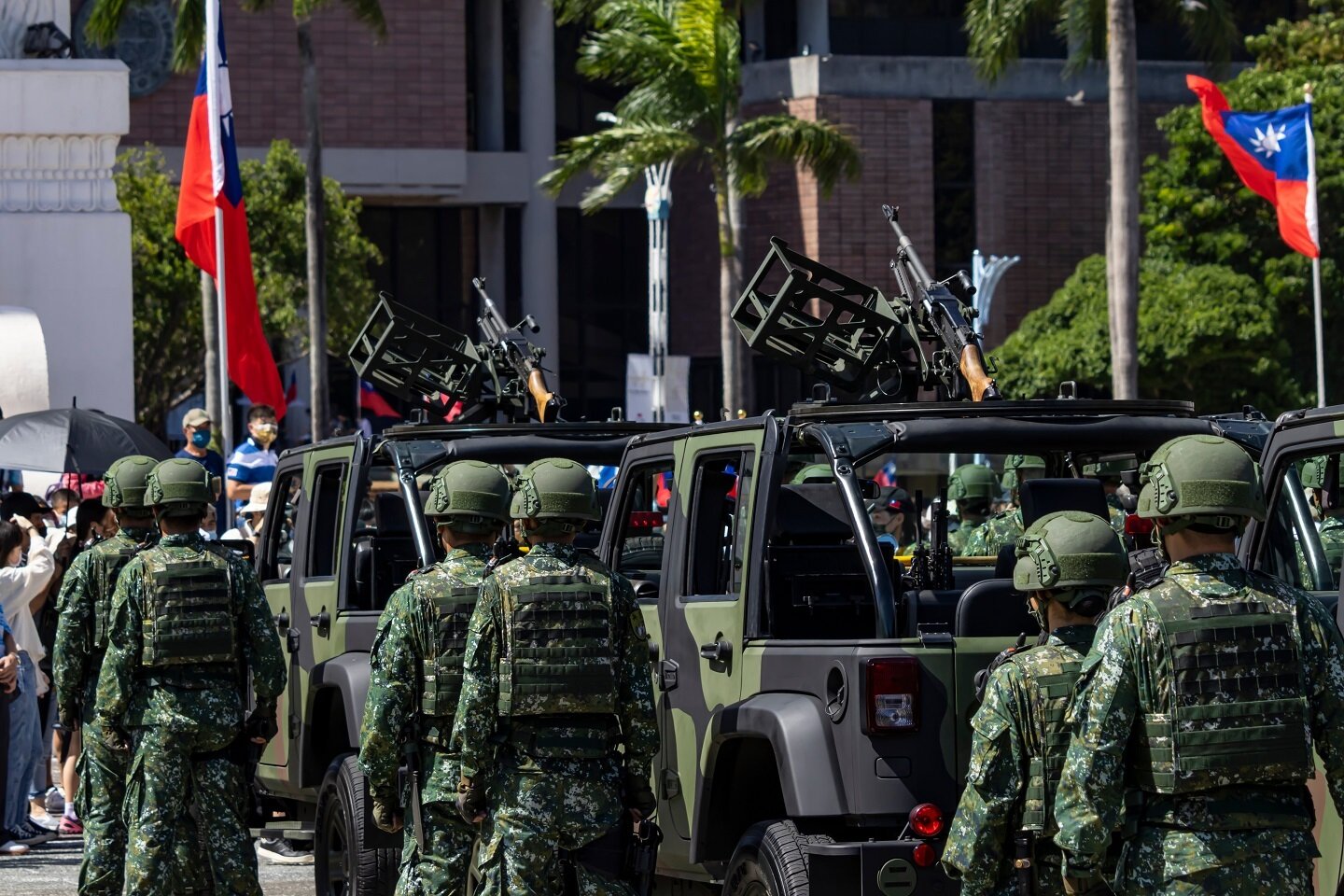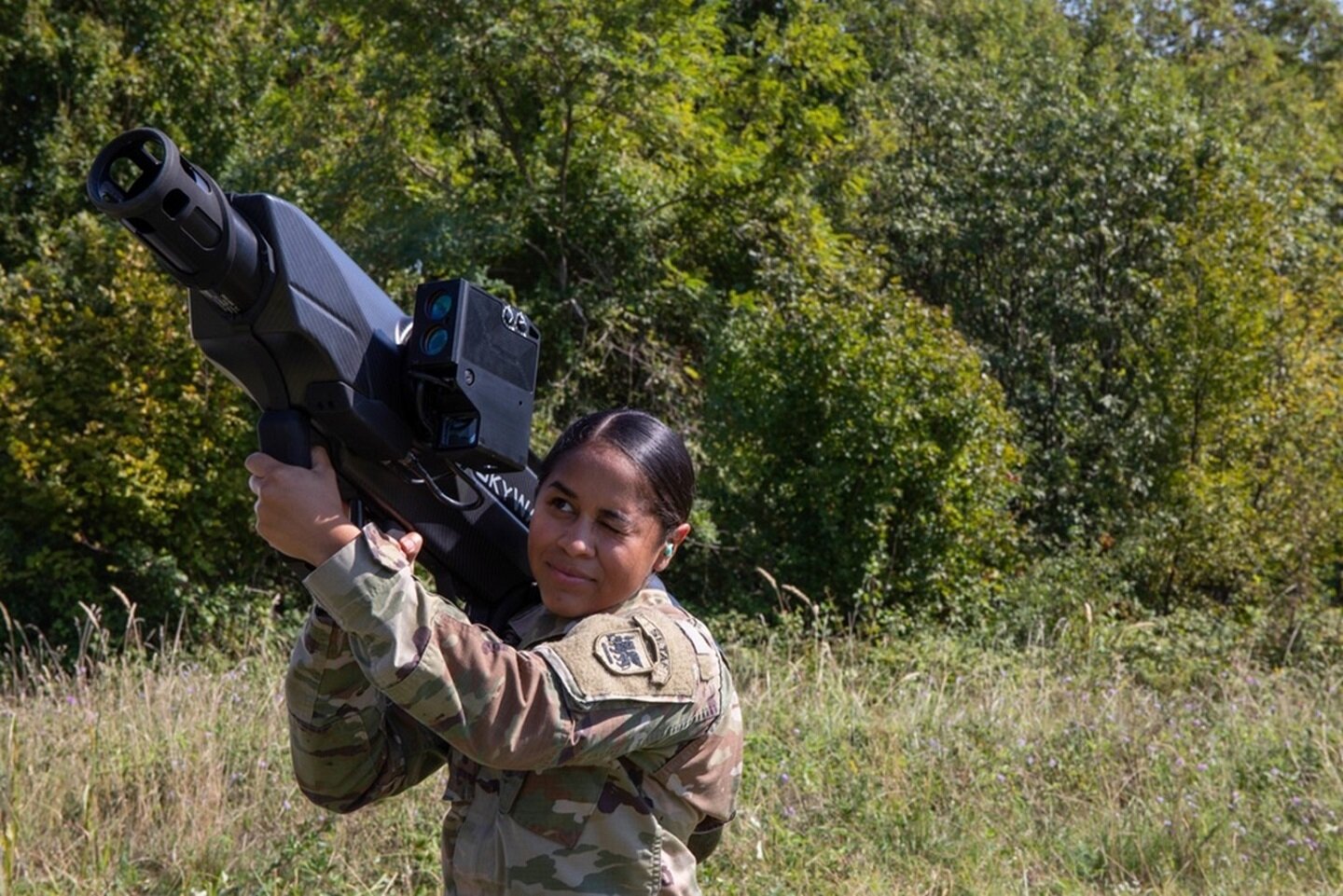Feature
Loitering munitions: from niche to necessity
As geopolitical tensions escalate, the demand for loitering munitions is soaring. Harry McNeil reports.

In June of 2024, the US gave the green light to a $360.2m agreement to provide Taiwan with Switchblade 300 loitering munitions. Credit: AeroVironment
Loitering munitions, a blend of drone and missile technology, are rapidly becoming a bedrock of modern military arsenals. With increasing global demand driven by current and potentially future conflicts from Ukraine to Taiwan, such systems are evolving, and case studies are providing insights and predictions for the future of this technology.
Once a niche segment within the unmanned aerial vehicle (UAV) market, loitering munitions have transformed over the past few decades. Originally conceived as a cost-effective solution to engage targets, such systems have evolved into high-tech, tactical assets capable of operating in various environments with lethal effect.
The journey of loitering munitions began in the 1980s, with Israel Aerospace Industries (IAI) developing the first modern iteration known as the Harpy. Designed to neutralise enemy radar systems, the Harpy could loiter in the target area until a threat was detected, at which point it would dive onto the target. This set the stage for a new class of weapons that combine the precision of guided missiles with the flexibility of UAVs.
Over the years, the technology behind loitering munitions has advanced rapidly. From introducing AeroVironment’s Switchblade series to the recent unveiling of Teledyne FLIR Defense’s Rogue 1 system, loitering munitions have evolved to now feature enhanced range, improved sensors, and augmented targeting capabilities.
These advancements have made them indispensable tools for modern militaries, enabling them to engage static and moving targets precisely.
According to GlobalData's “The Global Military Unmanned Aerial Vehicles (UAV) Market 2022-2032” report, the global market for loitering munitions was valued at $247m in 2022. Projections indicate a growth rate of 5.3% annually to reach $412m by 2032, growth driven by increasing demand from regions like Asia-Pacific, which is expected to account for 59.7% of the market over the forecast period.
Loitering munitions in action
The tactical utility of loitering munitions has been demonstrated in high-profile conflicts, most notably the ongoing war in Ukraine. In Ukraine, both Russian and Ukrainian forces have deployed loitering munitions extensively, using them to target personnel, armoured vehicles, and critical infrastructure, and have become a critical battlefield tool.
Ukraine Defense Forces have put out many videos showing Switchblade 600 taking out some of Russia’s most valuable electronic warfare and integrated air defence systems.
Brett Hush, senior vice president for Loitering Munition Systems at AeroVironment
James Marques, aerospace, defence, and security analyst at GlobalData, outlined loitering munitions lessons from recent operational use: “In Ukraine, of course, this has been taken to the ninth degree. Ukraine has proven able to churn out thousands of FPV drones similar to loitering munitions and uses them every day, the highest cause of Russian casualties. US-supplied Switchblade Loitering Munitions were also popular in the earlier stages.”
One of the most prominent examples is the Ukrainian force's use of AeroVironment’s Switchblade 600. Designed for longer-range missions and equipped with anti-armour capabilities, the Switchblade 600 has proven effective against Russian military assets, including air defence systems.
Brett Hush, senior vice president for Loitering Munition Systems at AeroVironment, noted in a recent interview at Eurosatory 2024 that “Ukraine Defense Forces have put out many videos showing Switchblade 600 taking out some of Russia’s most valuable electronic warfare and integrated air defence systems, extremely rare assets that their adversary has,” underscoring the weapon’s operational success in a contested environment.

Ukraine has demonstrated its capability to manufacture thousands of FPV drones resembling loitering munitions. Credit: Dmytro Sheremeta / Shutterstock
Teledyne FLIR Defense’s Rogue 1, showcased in May at the SOF Week convention in Tampa, further exemplified the versatility of loitering munitions. With its capability to operate in GPS-denied environments and its adaptability for lethal and non-lethal missions, the Rogue 1 represents the next generation of loitering munitions.
Market overview and global dynamics
The global market for loitering munitions is experiencing growth, driven by rising geopolitical tensions and the increasing recognition of their value. According to GlobalData’s “Thematic Intelligence: Loitering Munitions (2023)” report, the Asia-Pacific region is poised to be the largest market, with cumulative spending expected to reach $2.2bn between 2022 and 2032.
This surge is attributed mainly to regional conflicts and the need for enhanced defence capabilities in nations like Taiwan and South Korea.
In a scenario such as a Chinese invasion of Taiwan, they (loitering munitions) would make excellent defensive weapons.
James Marques, defence analyst at GlobalData
“In a scenario such as a Chinese invasion of Taiwan, they (loitering munitions) would make excellent defensive weapons,” Marques highlighted when discussing ongoing China-Taiwan geopolitical tensions and their potential influence on the demand for loitering munitions.
In June 2024, the US approved a $360.2m deal to supply Taiwan with Switchblade 300 and ALTIUS 600M-V loitering munitions. This move, intended to bolster Taiwan’s defence against potential threats from China, reflects the growing importance of loitering munitions in the Asia-Pacific region.
However, it has also sparked backlash from China, which views the sale as violating the one-China principle and threatening regional stability.
This deal highlights a broader trend of increasing export openness for loitering munitions, with companies like AeroVironment aiming to expand the availability of their systems to over 50 allied countries. Hush emphasised this objective, stating that “our production is well-prepared to meet this demand,” signalling a shift towards greater international collaboration in producing loitering munitions in the defence sector.

Taiwan is one country to have invested heavily in loitering munitions. Credit: Jeng Bo Yuan / Shutterstock
Europe is another key market, with countries like Lithuania investing in loitering munition technology. Granta Autonomy, a Lithuanian defence technology venture, has expanded its portfolio to include advanced UAVs and loitering munitions, the company’s growth fuelled by government funding and lessons learned from field testing in Ukraine, where its third-generation UAVs have proven effective in GNSS-denied environments.
“We started as military operators and saw early on that drones could make a significant impact on the battlefield,” said a spokesperson for Granta Autonomy. “The feedback from Ukraine was crucial in advancing our technology, showing us the importance of working effectively in contested environments.”
The next frontier
Several emerging technologies and market trends are poised to shape the future of loitering munitions, including the integration of artificial intelligence (AI) and swarm technology, which is expected to enhance the operational capabilities of loitering munitions.
AI will enable more intelligent target recognition and selection, reducing the risk of collateral damage and increasing the effectiveness of these weapons.
I think advances in AI over the next decade are only going to make them 'smarter', especially when used in large groups or 'swarms' where computers can coordinate them all together.
James Marques, defence analyst at GlobalData
When discussing which emergent technologies will impact the development of loitering munitions, Marques agreed with the impact of AI. “I think advances in AI over the next decade are only going to make them 'smarter', especially when used in large groups or 'swarms' where computers can coordinate them all together.”
According to GlobalData’s “Thematic Intelligence: Loitering Munitions (2023)” report, loitering munition designs will become more modular in the next decade, allowing for greater mission adaptability. This includes the development of reusable loitering munitions that can perform surveillance and return to base if no suitable target is found, a capability already being explored by countries like Israel and Turkey.
Moreover, the market will likely see increased demand for loitering munitions with longer loitering times and greater ranges.
However, the proliferation of loitering munitions also raises challenges, particularly in terms of ethical considerations and countermeasures. While enhancing their effectiveness, these systems' increasing autonomy also poses risks, particularly if they fall into the hands of non-state actors or are used in ways that bypass human oversight.
Counter-unmanned aerial systems (CUAS) are emerging as a critical component of defence strategies against loitering munitions. These systems are designed to detect and neutralise loitering munitions before they reach their targets. As the technology continues to evolve, the interplay between loitering munitions and CUAS will likely define the future of aerial warfare.
Loitering munitions represent an evolution in military technology, combining the precision of guided missiles with the flexibility and affordability of UAVs. As global demand continues to rise, driven by geopolitical tensions and technological advancements, loitering munitions are set to play an increasingly prominent role in modern warfare.

Defence strategies against loitering munitions are increasingly relying on counter-unmanned aerial systems technology. Credit: US DoD
From Ukraine's battlefields to Taiwan's strategic calculations, loitering munitions are proving their value as effective tools for both offensive and defensive operations. As the market evolves, integrating AI, swarm technology, and modular designs will further enhance their capabilities, making them indispensable assets for militaries worldwide.
However, with this growth comes the responsibility to address the ethical challenges posed by these weapons. The future of loitering munitions will be defined by their technological capabilities and the frameworks and policies governing their use.
As the defence community continues to grapple with these issues, one thing is clear: loitering munitions are here to stay, and their impact on the future of warfare will be profound.
Caption. Credit:

Phillip Day. Credit: Scotgold Resources
Total annual production
Australia could be one of the main beneficiaries of this dramatic increase in demand, where private companies and local governments alike are eager to expand the country’s nascent rare earths production. In 2021, Australia produced the fourth-most rare earths in the world. It’s total annual production of 19,958 tonnes remains significantly less than the mammoth 152,407 tonnes produced by China, but a dramatic improvement over the 1,995 tonnes produced domestically in 2011.
The dominance of China in the rare earths space has also encouraged other countries, notably the US, to look further afield for rare earth deposits to diversify their supply of the increasingly vital minerals. With the US eager to ringfence rare earth production within its allies as part of the Inflation Reduction Act, including potentially allowing the Department of Defense to invest in Australian rare earths, there could be an unexpected windfall for Australian rare earths producers.
